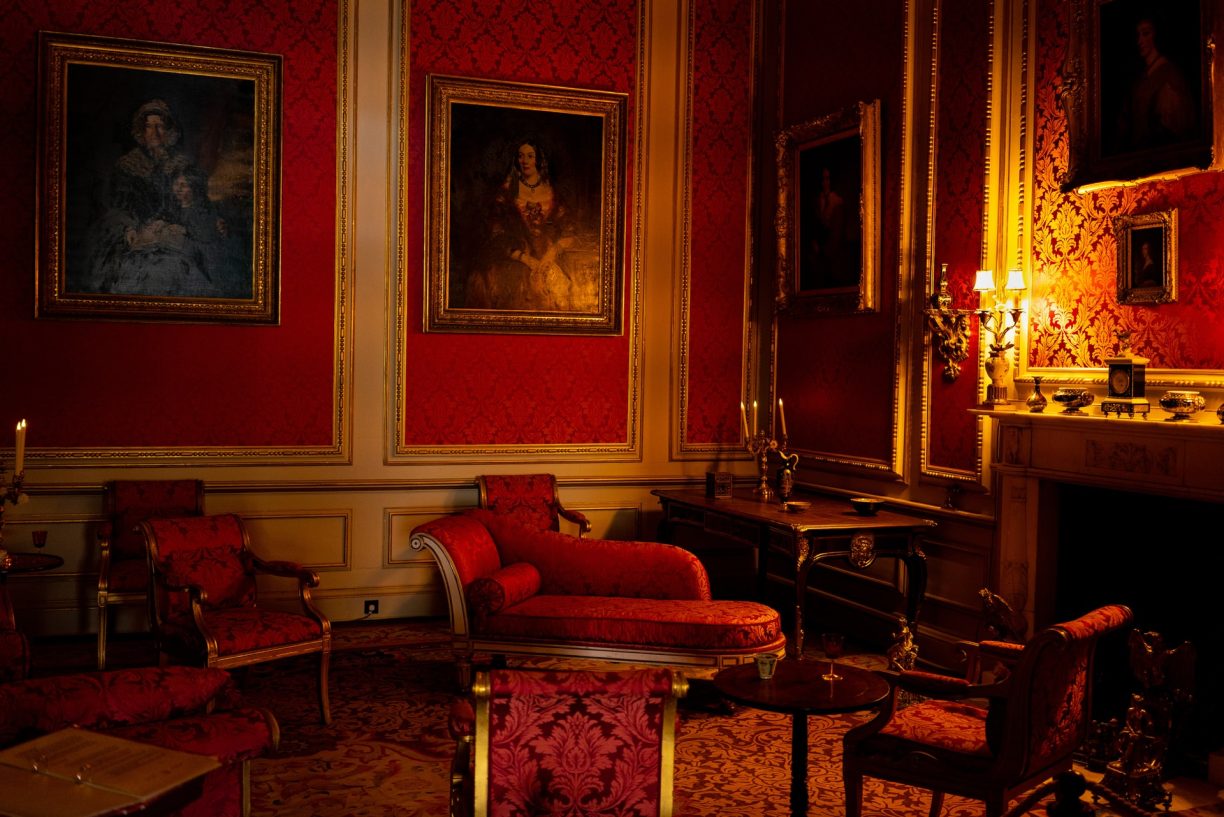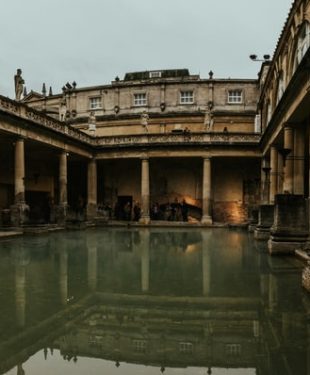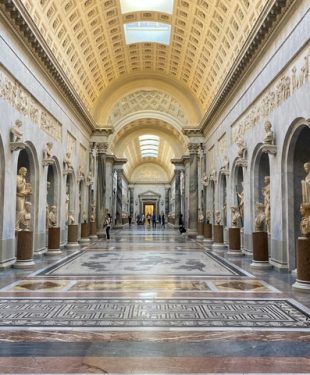
Today we want to talk about the history of luxury and it’s role in innovation. Luxury is a feel-good word used by many people across the world. This doesn’t mean that everybody enjoys it, but the vast majority of people are at least familiar with luxury items. People can be considered ‘luxurious’ themselves or own expensive/exotic goods and take pleasure in them.
The History Of Luxury And Its Role In Innovation:
Genesis
The word ‘luxury’ dates back to Roman times, and there was even a specific god for this – Janus, the god of doorways and beginnings and endings – who held two faces: one looked toward the future and was radiant with optimism; one looked toward the past, bearing wisdom gained through experience. When individuals had their doors trimmed with gold instead of iron or just made doilies out of gold, it was seen as a luxury, and Janus embodied that.
The first known usage of the word ‘luxury’ is in Greece (specifically Athens) on a stele referring to the Lakedaimonian trade of luxury items with Mesopotamia; however, this may not be the first time the word was ever used.
According to Webster’s Dictionary, there are three definitions for luxury:
- The quality or state of being luxurious
- An extravagant or costly habit or practice
- Something that serves only to indulge an individual’s tastes and desires without any sense of utility or practical purpose.

Photo by Dieter Blom on Unsplash
Luxury is often looked at as something that is frivolous, but in antiquity, it had crucial social significance and was not just about worldly desires. In ancient times it wasn’t just about indulgence – instead, individuals would have been indulgent for social reasons – it wouldn’t be indulgent to eat something you wanted. Still, it would be forgiving if you were the only one who could afford said thing.
When people hear luxury, they might think of expensive items or exotic homes. Still, luxury can also refer to comforts people are accustomed to receiving, which luxurious folk are more likely to have access to – possibly even having servants do things for them like make their bed. ‘Luxurious’ individuals may not even own any luxury items themselves. However, they will still use the word because they consider luxurious may differ from person to person or place to place.
Present Day
Luxury goods in the present day include luxury menswear, swimming pools, private jets, and just things that are more readily available to upper-class people without having to wait in long lines or take out a second mortgage. Simply being wealthy enough not to have to do manual labor may be considered luxurious. There is a saying that zero-hours spent working is equal to zero dollars earned – if individuals never have to work, they grow accustomed to not having to and will feel comfortable doing so. This utility of leisure time is called ‘Ludus,’ which means playing around or engaging in sports and games instead of working.
One significant thing about luxury is that everybody can enjoy it – even if they can’t afford or don’t want to spend money on expensive items, the luxury of watching a movie in a comfortable theater (and not having to get popcorn) is something everyone can enjoy.
Delicate
The very first time luxury was described as such specifically meant ‘delicate’ and primarily referred to textiles. This isn’t all that surprising, considering the materials needed to make fabrics cost more than most other things, and it’s likely because of this that many cultures favored textiles for their clothing and decorating homes. In some places like Egypt and Crete, linen garments were used primarily by wealthy individuals primarily for cosmetic reasons. At the same time, poorer people wore cheaper fabric made from flax or even just wore nothing at all. Rich people in Greece would adorn themselves with jewelry that was more than likely made of silver and gold. In the Kingdom of Punt (modern-day Somalia), people wore scarves on their heads, marking them as members of the upper class because only they could afford these.

Status and Wealth
The earliest archeologists we have notes from say that different levels of luxury goods were distributed depending on status and also by wealth – this means not everyone had access to everything. Still, poor folk did get some items even if they weren’t precisely luxurious per se. Some individuals in Mesopotamia might have obtained things like sugar cane or fine textiles from India, while others couldn’t help due to lack of money or power. This is similar to how it works today, where even though some items are more expensive or hard to get, they aren’t exactly luxurious in their own right.
Religion And Royalty
Throughout history, luxury has had ties to religion and royalty. For example, in Crete, the ‘Great Goddess‘ was an essential figure in mythology, similar to how Aphrodite is mentioned in Greek mythology. The Great Goddess was worshiped, but her priestesses were also considered high-ranking members of society due to their elevated status. This cultural tradition continues into the present day when many women of royal families still retain some of their traditional customs like dressing modestly, having certain roles at home instead of out in the workforce, etc. Some scholars believe that this connection between wealth and religious power helped make luxury something that wasn’t just thought of as fun or frivolous but instead something that was esteemed.
New Customs
One large impact the development of luxury had on history is the spread of cultural goods throughout regions where they weren’t native. For example, silk produced in China was one of the first luxury items traded around 200 BCE, and it came with a very high price tag due to long periods spent traveling by ship or caravan. This allowed for new practices like using candles during sacrifices because these were brought back from places like Persia (modern-day Iran) which eventually made their way to Greece. These changes show how people’s ideas about religion changed once new customs were introduced through trade.
 Power
Power
Luxury has the power to affect ideas about religion, royalty, class, etc., but it also influences people’s daily lives in many ways. For example, the luxury of taking baths instead of just washing up in rivers or lakes once a day was something most wealthy individuals were able to enjoy. This eventually came into fashion in Greece, which then spread all over Europe and beyond, leading to an increase in hygiene. When there were religious rules that forbid bathing, it wasn’t because anyone thought washing was bad for you during the Middle Ages. Instead, it had more to do with people believing that bathhouses are places where sin can be committed without others knowing due to the lack of oversight they have.
Status
As time went on and civilizations developed, we see luxury taking on new forms and practices – for instance, in Persia, it became considered a sign of status to enjoy having gardens and greenery. In fact, this kind of gardening was so popular that it became compulsory for all nobles who lived on royal land to have some garden space as part of their home. This eventually made its way to England and France, where they would create elaborate gardens filled with unique plant species worldwide.
Science And Technology
Luxury also found its way to the world of science and technology. In fact, it was once thought that luxury objects were bad for people because they would distract them from doing productive work – this belief held so much weight during the Middle Ages that a man who made a luxury item was considered a thief. Yet today, many items that are not only luxurious but also very practical have been created over time. For example, scientists have managed to create microscopes and telescopes – both of which were originally deemed luxuries – to help us study the human body and stars more closely in order to advance medicine or astronomy.

Art And Culture
There is no doubt that luxury has had an incredibly large impact on history as well as art and culture. It is a topic that could fill volumes with the amount of information there is to learn about this subject. Yet it also holds the ability to make us think about history in different ways and opens up new questions about what we’ve learned too. It’s the reason why luxury items are considered by some to be various kinds of art forms because, at their core, they can remind us of pivotal moments in our history.
Forever Changing
Luxury has been one of those things that are always changing with time yet remain popular over generations – it has evolved from being looked upon as frivolous to something that is highly respected in some circles. This is seen most in the world of art with the advent of consumerism when it became a sign that one has arrived in society. Now, being able to afford luxury items is proof that someone has enough money to enjoy life. It also shows how our idea about what makes an item worthy of being considered luxurious changes over time too.
A Global Influence
Overall, luxury has been a part of society since the earliest civilizations were around, which means that not only does it shape how culture functions but also how groups interact with one another. Whether you’re religious or royalty, everyone has ended up influenced by the idea of luxury at some point in time, for better or worse.
Read more lifestyle articles at ClichéMag.com
Images provided by Flickr, Unsplash, Pexels, Pixabay & Creative Commons
The post The History of Luxury and its Role in Innovation appeared first on Digital Online Fashion Magazine | Free Fashion Magazine | Fashion Magazine Online.
0 Commentaires